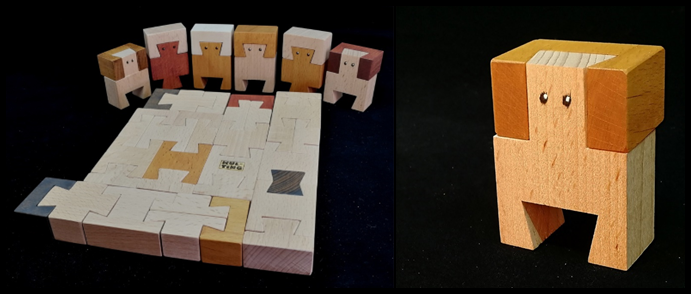
5. Laying Puzzles Using Building Blocks
Share
Age: works at all ages. Younger children use fewer bricks.
Examples of abilities that are trained
- FINE MOTOR SKILLS
- EYE-HAND COORDINATION
CONCENTRATION AND PATIENCE - SHAPE VISION
PROBLEM SOLVING - SPATIAL AWARENESS
Pedagogical thoughts and challenges in the child's learning.
Puzzling with blocks is an exercise to train the child's problem-solving skills.
- What pieces go together? We investigate shapes, colors, three-dimensional pieces
- Puzzle without a role model
- Puzzle by role model
- Puzzle in a frame with or without a model
- We practice recognizing patterns, classifying and organizing pieces to be able to solve the puzzle.
- The child strengthens their ability to solve the puzzle by training, testing and analyzing the results. Why doesn't that part fit there?
- When the child is older and uses many pieces, the spatial ability is trained by trying to see in the pieces in a larger context and also in more dimensions.
Puzzling with blocks is an exercise for language development and body image
- Together we practice explaining what puzzle pieces look like. What colour/shape is it? The child develops his or her vocabulary in the joint conversation with other children and adults.
- The child develops their motor skills by grasping, twisting, building and fitting different pieces together.
- The child trains eye-hand coordination when it has to place the pieces correctly in the puzzle.
Puzzle with blocks is also an exercise where the child develops self-esteem and qualities and practices social interaction.
- The ability to fail, repeat, and try again is trained. The child learns that you can overcome challenges by being patient.
- Putting together puzzles encourages creative thinking as it should try to find different ways to make the pieces fit together. The child then learns to be flexible and dare to experiment.
- By choosing the right level of difficulty for the puzzle, we give the child the opportunity to strengthen their self-esteem and feel satisfied with having completed a challenge.
- When several children play together, you get to practice turn-taking, sharing and cooperating.
- Puzzles require focus and attention to detail, which means that the child's ability to concentrate increases.

A KUL.TING figure is a 2-piece puzzle!
